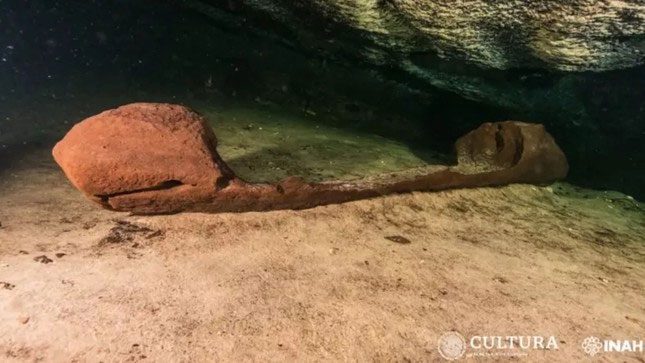A wooden canoe discovered in an underwater cave in Mexico may have been used as part of a Maya ritual.
This canoe was found surrounded by human and animal bones near the ancient Maya city of Chichén Itzá. It is believed that this canoe may have been utilized in a Maya ceremony.

Carbon analysis of the canoe determines it was made in the 16th century. (Photo: National Institute of Anthropology and History (INAH)).
In 2021, divers in Mexico’s Yucatán Peninsula discovered this canoe and skeletal remains deep inside an underwater cave at a depth of 4.6 meters below the water’s surface.
In total, archaeologists uncovered 38 skeletons, including human foot bones (a leg bone) likely belonging to a woman, as well as bones from a nine-banded armadillo, dog, turkey, and eagle.
The abundance of armadillo bones and the presence of human foot bones led researchers to conclude that the canoe may have been used by the Maya in a ritual and intentionally placed inside the cave.
This idea is based on the fact that armadillos are skilled swimmers capable of holding their breath underwater. Researchers suggest that these items may have been intended for use in the afterlife.
The Maya believed that caves and cenotes (sinkholes) were gateways to the underworld. Alexandra Biar, an archaeologist from the French National Centre for Scientific Research (CNRS), stated: “There are images known in Maya pottery where [the armadillo] appears as a stool for the gods.”
The canoe itself provides further evidence to archaeologists that it was used as part of a sacred ritual.
When the canoe was first discovered during an excavation for a railway project, archaeologists estimated its age to be around 830 to 950 AD, according to Reuters. However, new carbon analysis indicates that the wood of this canoe dates back to the 16th century.





















































